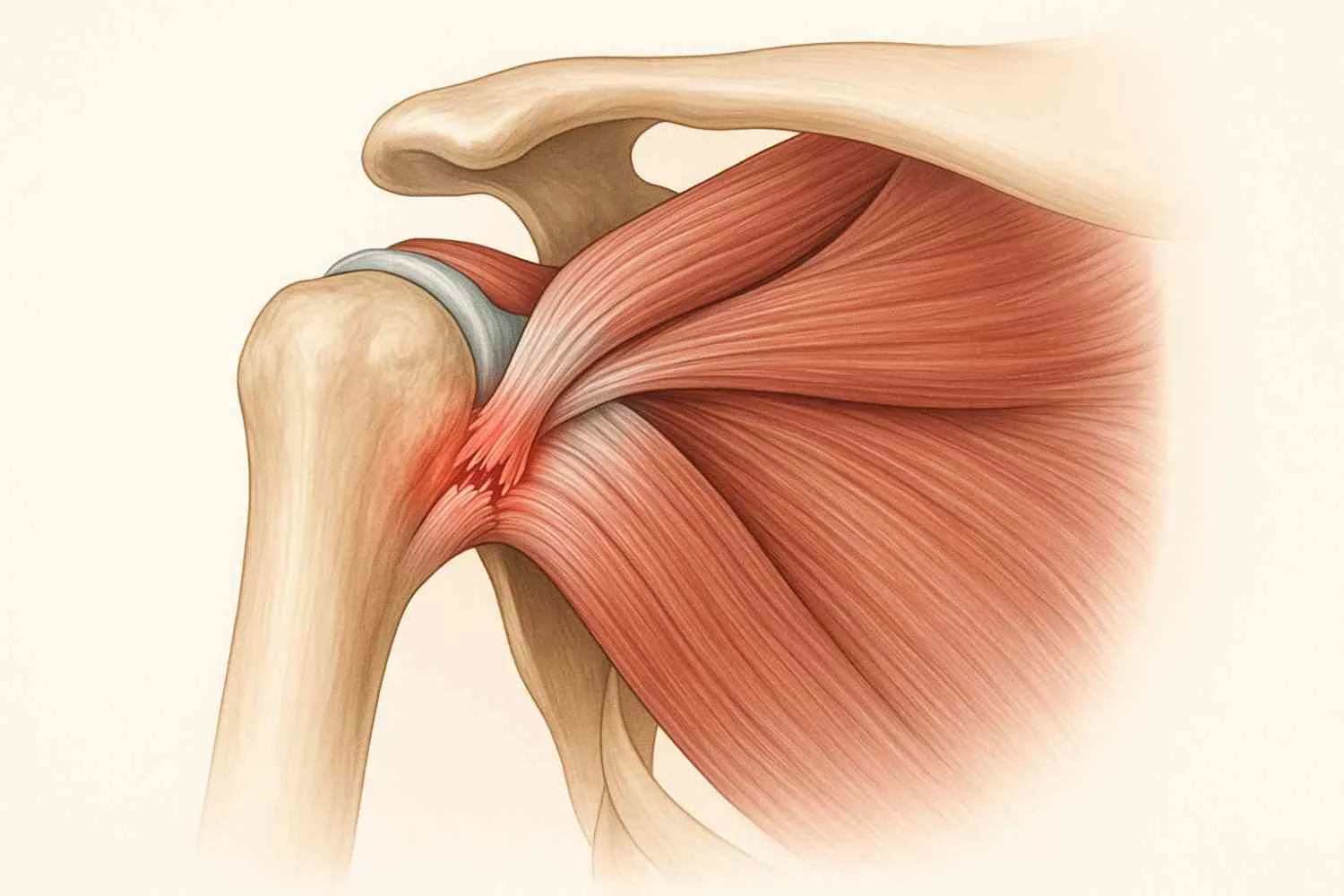




Author: Dr. Garima Biswas
Yoga 0
Whether you play professional football or run weekends, accidents are inevitable, and maintaining perfect physical condition is very vital. We have sports physiotherapy right here. This is a specific field of physiotherapy with an eye on injury prevention, rehabilitation, and improved sports performance. Unlike conventional physiotherapy, which tackles general physical issues, sports physiotherapy emphasises the specific needs of athletes.
Understanding the variations between sports physiotherapy and traditional physiotherapy would help one to appreciate their benefits. In normal physiotherapy the primary goal is to help patients recover from surgeries, chronic illnesses, or ordinary injuries; in sports physiotherapy, the emphasis is on perfect performance, speedy recovery, and long-term physical resilience. Athletes require particular therapy not only to recover but also to allow faster and stronger return to their respective sport.
What is Sports Physiotherapy?
Prevention, diagnosis, and treatment of sporting injuries are the goals of sports physiotherapy. Healing, performance, mobility, and endurance are addressed, helping athletes excel in various sports. A sports physiotherapist monitors players' bodies, creates training regimens to enhance abilities, and prevents injuries.
Three main areas define the scope of sports physiotherapy:
1. Injury prevention:
Sports physiotherapists find possible weaknesses that can cause injury by means of biomechanical analyses and strength evaluations, therefore they create customized programs to reduce risk.
2. Rehabilitation:
In the sad event of an accident, the physiotherapist is rather important in rehabilitation as he guides the athlete through a healing process guaranteeing safe return to sports free from re-injury.
3. Performance Enhancement:
Athletes are always working towards improved performance. Sports physiotherapists use certain methods and exercises to improve agility, strength, and flexibility.
Common Sports Injuries
Because of the physically demanding nature of their activity, athletes—from any sport—run the danger of injury. Typical sports-related injuries are:
Sprains:
Usually affecting the ankles and knees, sprains are caused by ligaments either straining or tearing.
Fractures:
Bone fractures may come from high-impact activities such as cycling, basketball, and football.
Muscle Strains:
Overuse of muscles causes strains usually affecting the hamstrings, calves, and back.
Ligament Tears:
If improperly treated, a major injury like an ACL (anterior cruciate ligament) rupture in the knee could be career-threatening.
These injuries not only compromise an athlete's capacity to engage in their activity but also may have long-term effects on their health. A sports physiotherapist therefore becomes very important in assessing the problem, offering suitable treatment, and developing a safe and sensible recovery schedule.
Role of a Sports Physiotherapist
A sports physiotherapist is in charge of much more than just injury treatment. Their purpose is multifarious, all of which are meant to maintain athletes in optimal condition and reduce their chance of injury. The main duties are:
1. Injury Assessment and Diagnosis:
Sports physiotherapists precisely analyze injuries using their understanding of anatomy, biomechanics, and sports-specific demands. They do extensive physical exams and can find the precise issue using imaging tools.
2. Treatment Techniques:
Usually used are manual treatment, exercise therapy, and electrotherapy in conjunction. Among the manual treatments are stretching, joint mobilization, and soft tissue massaging. Exercise therapy works to increase flexibility and strengthen weak points. To help cure and control pain, electrotherapy employs techniques such as ultrasonic waves, TENS (transcutaneous electrical nerve stimulation), or cryotherapy.
3. Rehabilitation Plans:
Every damage calls for a unique rehabilitation schedule. This slow procedure is meant to guarantee that the athlete recovers complete strength, flexibility, and endurance before going back to their sport.
4. Education and Prevention:
Beyond therapy, sports physiotherapists teach players correct methods, equipment, and warm-up exercises to avoid future injuries.
Techniques and Methods in Sports Physiotherapy
Sports physiotherapy uses many approaches and strategies depending on the particular demand. The most often occurring are these:
Taping and strapping:
This technique stabilizes joints and supports muscles, avoiding further damage during physical exercise.
Dry Needling:
Using a technique known as "dry needling," small needles are placed into trigger points in muscles to alleviate discomfort and increase mobility.
Therapeutic Exercises:
These are meant to increase general mobility, strength, and flexibility. Athletes work on functional movement training, strengthening programs, and range of motion exercises.
Technology-Assisted Methods:
Sports physiotherapists often employ technologies such as ultrasonic deep tissue heating, cryotherapy (cold treatment) for inflammation management, and electrical stimulation to improve muscle rehabilitation.
Still, another pillar of sports physiotherapy is tailored training regimens. These programs especially fit an athlete's sport, injury history, and personal physical condition. These programs guarantee that athletes stay in top form by tackling deficiencies and maximizing strengths.
Benefits of Sports Physiotherapy
Offers advantages well beyond the healing of injuries. There are many main benefits:
Faster Recovery from Injuries:
Athletes may recover faster and more successfully than they could with rest alone by use of a planned rehabilitation program.
Improved Physical Performance:
Correcting flaws and concentrating on biomechanics helps physiotherapy greatly increase an athlete's agility, endurance, and strength.
Injury Prevention:
Strengthening programs and mobility exercises among other preventive measures assist in lowering the chance of future accidents.
Enhanced Flexibility, Mobility and Strength:
Regular sessions assist athletes preserve and increase their physical qualities, therefore enabling them to exceed their boundaries safely.
How to choose a Sports Physiotherapist:
Sportsmen who want to remain healthy and perform at their best must choose the correct sports physiotherapist. Here's what to search for:
Qualifications: Verify that the physiotherapist has certificates in sports physiotherapy and a physiotherapy degree.
Experience: Search for someone who has dealt with athletes—especially those in your field of work—in past years.
Key Qualities: A good sports physiotherapist is not only technically competent but also communicative, sympathetic, and very informed about the sports environment.
Future of Sports Physiotherapy
With the use of developing technology, sports physiotherapy seems to have bright future. Tracking an athlete's activity, tracking physical performance, and identifying early symptoms of damage are being increasingly done via wearable technology and artificial intelligence. Data analytics provide physiotherapists with real-time information on an athlete's health, therefore enabling more exact and quick adjustments.
The function of sports physiotherapy will change as sports develop and become increasingly included in training schedules, rehabilitation programs, and general athlete health care.
Conclusion:
Sports physiotherapy is, all things considered, a vital discipline that enables athletes to avoid injuries, hasten recovery, and maximize performance. Working with a sports physiotherapist can let you, whether you play recreationally or professionally, remain in the game longer and more healthily. Athletes who give physiotherapy first priority not only heal from injuries but also avoid them, therefore guaranteeing a long and successful sporting career.
Frequently Asked Questions
Add comment

























.webp)





.jpg)






































